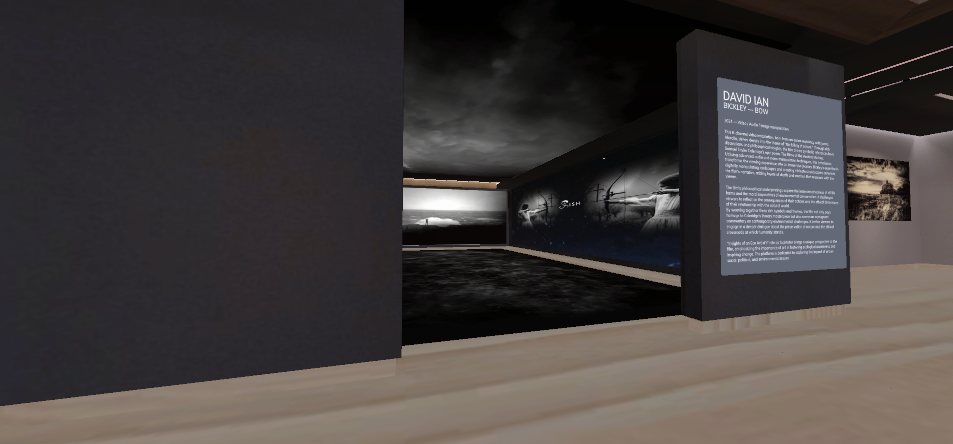Insights of an Eco Artist
Media Platform &
Creative Studio

Echoes
In the ever-evolving discourse of artistic practice, the interplay between nature and creativity emerges as a profound exploration of existence. "Echoes" invites viewers to engage with the intricate relationships between water, alchemy, and the rich heritage of Madeira Island.


This exhibition features the artists' works from our September online residency program and seeks to illuminate how art can reflect and respond to the environment, advocating for a renewed sense of responsibility towards our planet and its ecosystems. It posits that through this creative lens, we can cultivate a deeper understanding of our interconnectedness, fostering empathy and awareness that transcends traditional boundaries. As you navigate this virtual space, allow the narratives woven by these artists to resonate with your own reflections on the natural world.
The participating artists—Kenny Ros, Rebecca Odessa, David Bickley, and Francesca Busca.
Curated, developed and designed by Joana Alarcão.





LAURISILVA The rise and fall of a primeval forest by Kenny Ros
Millions of years ago, the island of Madeira emerged through volcanic processes deep in the Atlantic Ocean. Over time, the volcanic rock eroded into nutrient-rich soils, giving rise to prehistoric laurel forests that evolved into ecosystems brimming with biodiversity. This 'Laurisilva' forest flourished, overgrowing the island for centuries. However, following the discovery of Madeira in 1419, the Laurisilva began to shrink under various human influences. This once-majestic primeval forest continues to dwindle, and its rare, untouched remnants, stand now as a poignant symbol in the global quest between human progress and ecological sustainability.
The Pitter-Patters by Francesca Busca
Visually reproducing the sound and vibrations obtained by the fall of a metal object on a hard surface under water, like a pin in a pool, or a pebble in a pond; that of drops on a body of water, their extent softened by the sandy or muddy bed; and a drop on a hard surface, such as a window pane, and its transient nature
Bow by David Ian Bickley
his 6-channel video installation, born from an online residency with Joana Alarcão, delves deeply into the theme of "the killing of nature." Through rich discussions and philosophical insights, the film draws symbolic references from Samuel Taylor Coleridge's epic poem, The Rime of the Ancient Mariner. Utilising advanced audio and video manipulation techniques, this installation transforms the viewing experience into an immersive journey. Bickley's expertise in digitally manipulating landscapes and creating intricate soundscapes enhances the film's narrative, adding layers of depth and emotion that resonate with the viewer.
The film's philosophical underpinnings explore the interconnectedness of all life forms and the moral imperatives of environmental conservation. It challenges viewers to reflect on the consequences of their actions and the ethical dimensions of their relationship with the natural world. By weaving together these rich symbols and themes, the film not only pays homage to Coleridge's literary masterpiece but also serves as a poignant commentary on contemporary environmental challenges. It invites viewers to engage in a deeper dialogue about the preservation of nature and the ethical crossroads at which humanity stands.
"Insights of an Eco Artist’s" role as facilitator brings a unique perspective to the film, emphasizing the importance of art in fostering ecological awareness and inspiring change. The platform is dedicated to exploring the impact of art on social, political, and environmental issues.
Lilith by Rebecca Odessa
"Although my love of water began with the sea, the water I am most interested in is fresh water, i.e., water held in underground aquifers, as well as rivers and lakes etc. The creation and building of civilisations were possible because humans learned how to control such waters, for example through the use of wells. Wells are a vital part of the human story, and have a rich history, mythology, and ritualised engagement associated with them. It is this role of wells, in all its facets, that is the current focus of my art practice